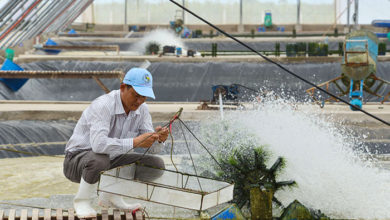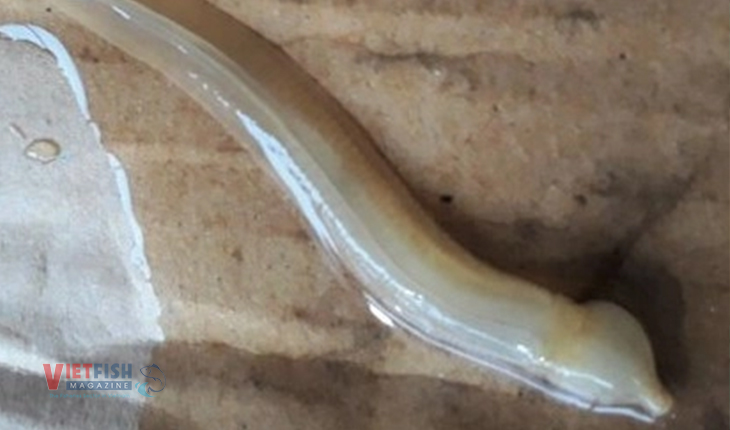Bình Định seeks to be self-sufficient in orange-spotted grouper broodstock production
With an aim to diversify seafood broodstocks which bring high economic efficiency and can be reared in cages, Bình Định provincial officials decide to take the initiative in broodstocks of orange-spotted grouper.
The Northern National Broodstock Center for Mariculture – NNBCM (under the Research Institute for Aquaculture no 1-Ria1) worked with the provincial center for Agriculture broodstock (under the Agriculture and Rural Development Department) to deploy and implement the thesis of artificial propagation of orange-spotted grouper at the Cát Tiến Station of aquaculture experiment (under the provincial center for agriculture broodstock) on March 2020.
Đoàn Văn Quyền, Deputy Director of the Cát Tiến Station of aquaculture experiment, the artificial propagation of orange-spotted grouper is carried out by rearing five pairs of selected broodstocks until they spawn. Those spawns were produced after one month and carefully checked before nursery. All phases are strictly implemented in accordance with guidance and procedures imposed by NBCM. Currently, these broodstocks are reared in grow-out ponds and harvested until they reach commercial size.
Three courses of spawn have produced as many as 10 million of larvae, which then grew up to fingerling and juvenile. A total of more than 3,000 juveniles size 5-6 cm/pc have been produced.
Three main sources of broodstocks involve natural fishing, artificial propagation in domestic broodstock centers, and imports from China. Artificially propagated broodstocks account for 10-15% of the country’s sources. The price of orange-spotted grouper is now 15,000-20,000 dong/pc (5cm).
Orange-spotted groupers have high resistance and suffer from very few diseases. Farmers can produce 8-10 kg of fish per one cubic meter of cages and earn 20-25 million dong from a 10m3 cage on average. In comparison to pompano, cobia or sea bass, orange-spotted groupers bring high economic efficiency and are easy for sales. This is a potential species for cage farming that coastal farmers can pursue.
“Grouper originates from the ocean. It usually takes 4 or 5 years, even more, to produce broodstocks for propagation. However, grouper broodstocks are always available in Ria1 and selected ones were brought to the Cát Tiến Station of aquaculture experiment right after Bình Định’s Science and Technology Department sent an order. After larvae are produced successfully, they will be put in our center’s grow-out ponds or brought to other facilities for nursery. A survival rate of 15% can be reached from larvae to fingerling and broodstock. This is beyond our expectation as we were targeting 5%. We plan to let those broodstocks produce more three or five times.”, said Master Cao Văn Hạnh, Deputy Director of NNBCM.
NNBCM plans to work with the provincial broodstock center to produce more than 16,200 fingerlings size 3-5cm and nurse around 5,000 – 6,000 pcs to supply the department of Science and Technology for expansion of this model.
Deputy Director of the provincial broodstock center Phan Thanh Việt said that grouper in general and orange-spotted grouper in particular is one of high economic value species. Local farmers have imported broodstocks from other provinces; however broodstocks can become weak or be easily infected with diseases during transportation. By cooperating with the department of Science and Technology and NNBCM in experimenting artificial propagation of orange-spotted grouper, we are gradually approaching and mastering techniques to enable ourselves to study, cross breeds, and produce broodstocks so as to satisfy local farmers’ demand.
VFM






